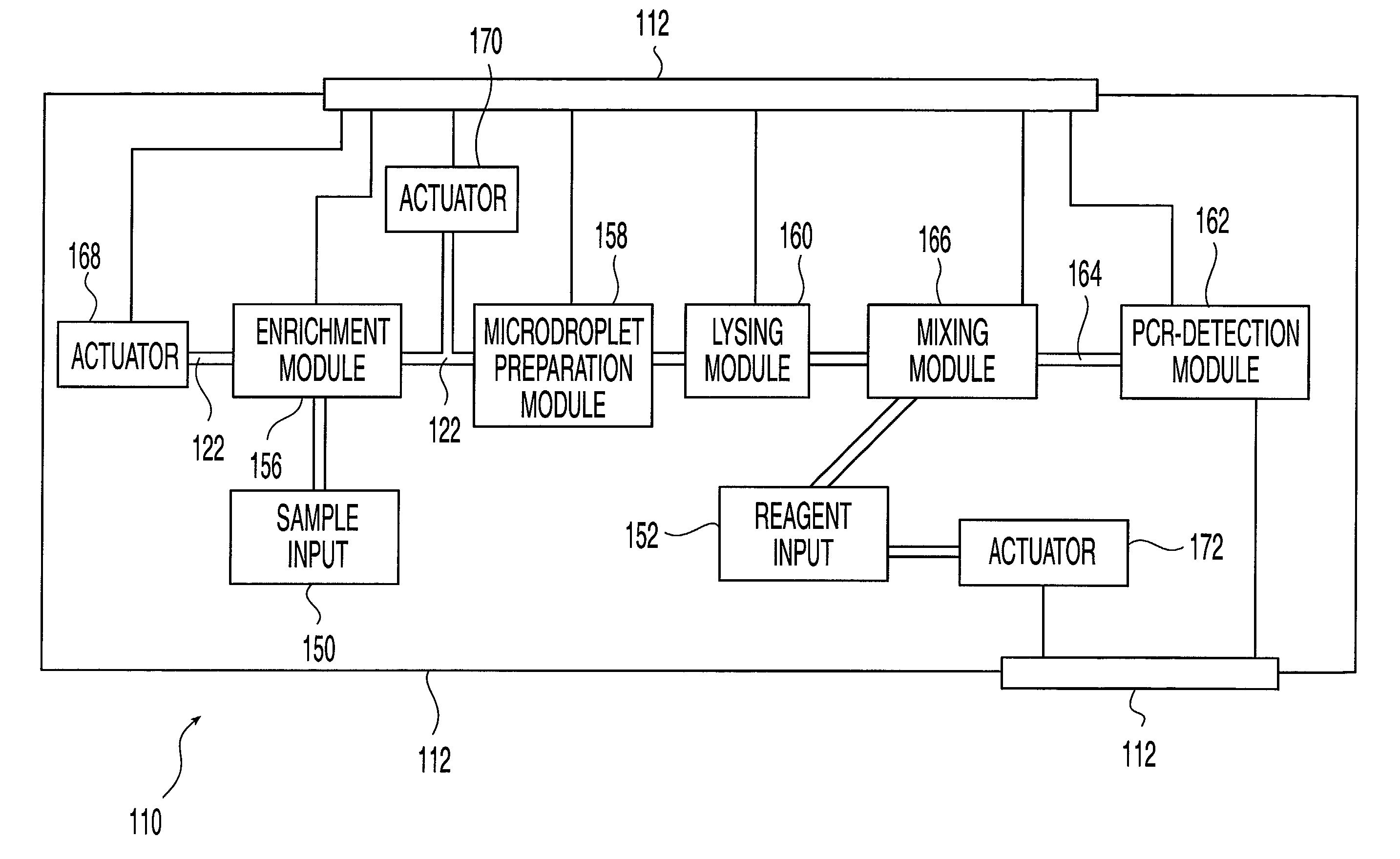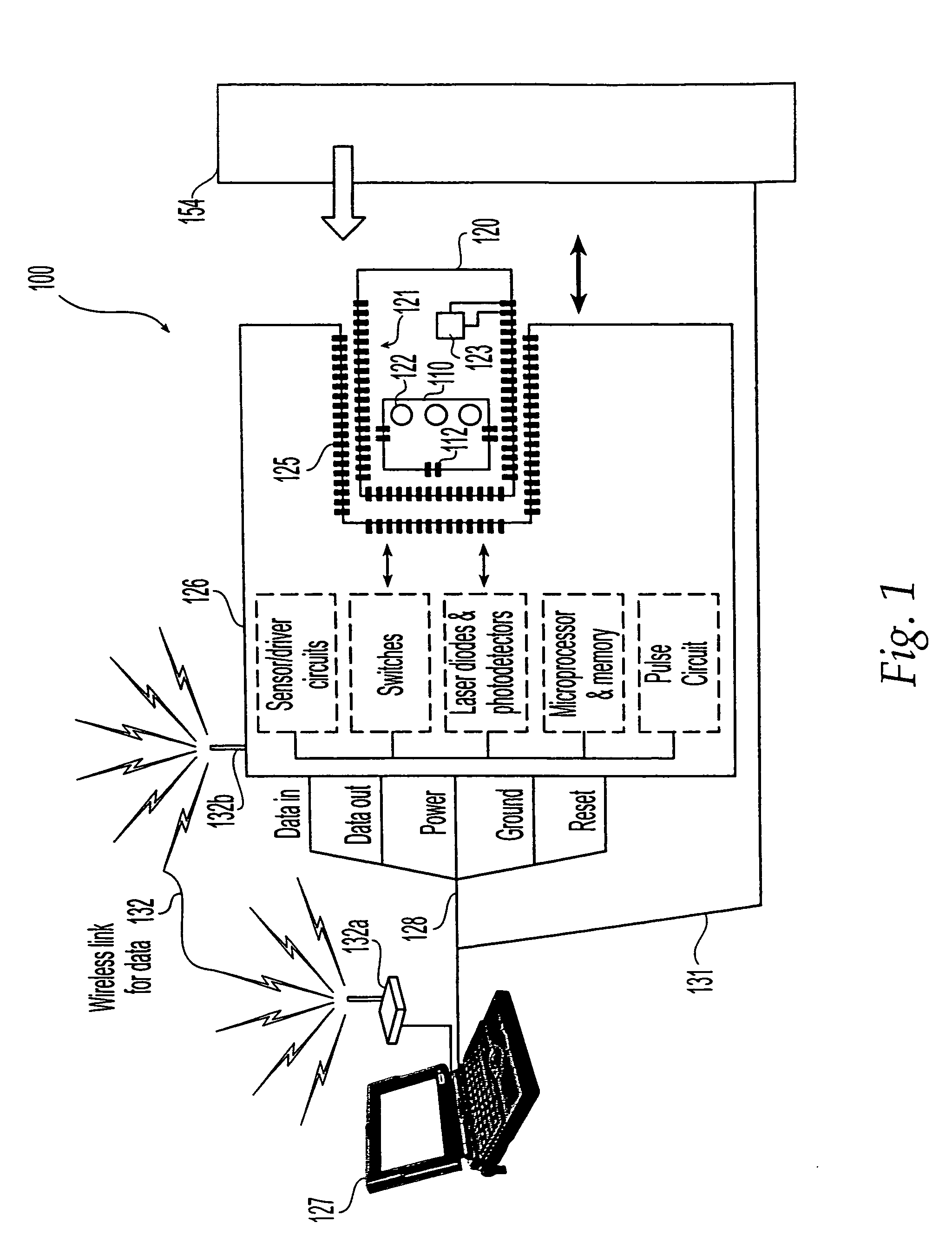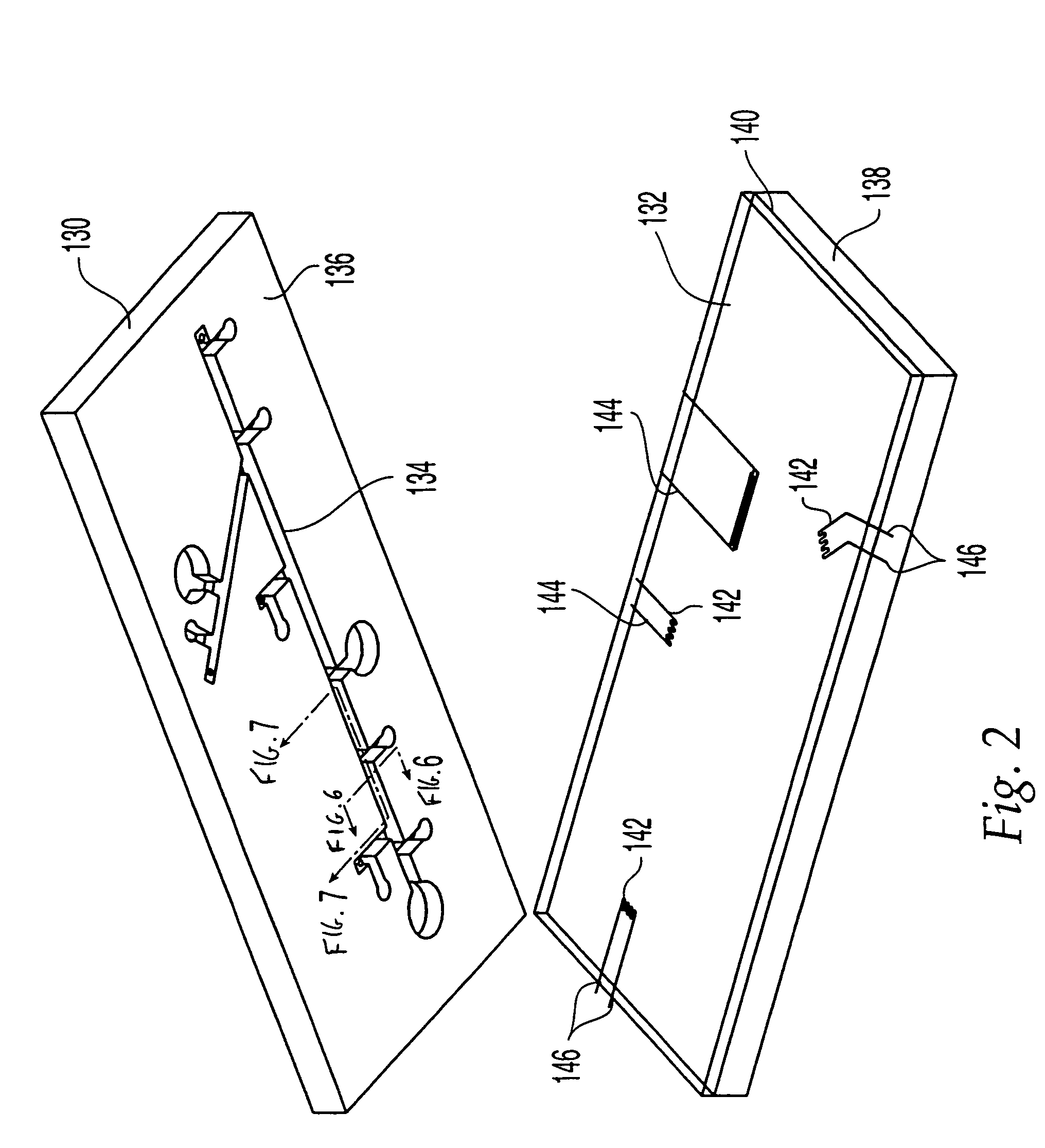Methods and systems for releasing intracellular material from cells within microfluidic samples of fluids
a microfluidic and fluid technology, applied in the direction of positive displacement liquid engine, fluid speed measurement, filter regeneration, etc., can solve the problems of uncertainty, especially difficult microfluidic analysis of cells within body fluids, and introduce uncertainty
- Summary
- Abstract
- Description
- Claims
- Application Information
AI Technical Summary
Benefits of technology
Problems solved by technology
Method used
Image
Examples
Embodiment Construction
[0032]The present invention relates to microfluidic systems and methods for processing materials, such as samples and reagents. More specifically, the invention relates to microfluidic systems and methods for processing particle containing fluids. The fluid component of the particle-containing fluid is a gas or, preferably, a liquid. In either case, the fluid entrains particles, which tend to move with the fluid. The particles of the particle-containing fluid are preferably whole cells, such as bacterial cells or cells of an animal, such as a human. However, they may include intracellular material from such cells. For example, a system of the invention may be used to process a sample of bacterial cells to determine whether the bacteria are pathogenic.
A. System Overview
[0033]FIG. 1 depicts a microfluidic system 100 that includes a microfluidic device 110 and corresponding cartridge 120, which receive one or more fluid samples and process the samples under the control of computer 127 ...
PUM
| Property | Measurement | Unit |
|---|---|---|
| line-widths | aaaaa | aaaaa |
| diameter | aaaaa | aaaaa |
| diameter | aaaaa | aaaaa |
Abstract
Description
Claims
Application Information
 Login to View More
Login to View More - R&D
- Intellectual Property
- Life Sciences
- Materials
- Tech Scout
- Unparalleled Data Quality
- Higher Quality Content
- 60% Fewer Hallucinations
Browse by: Latest US Patents, China's latest patents, Technical Efficacy Thesaurus, Application Domain, Technology Topic, Popular Technical Reports.
© 2025 PatSnap. All rights reserved.Legal|Privacy policy|Modern Slavery Act Transparency Statement|Sitemap|About US| Contact US: help@patsnap.com



